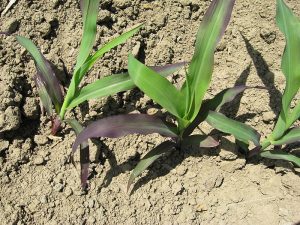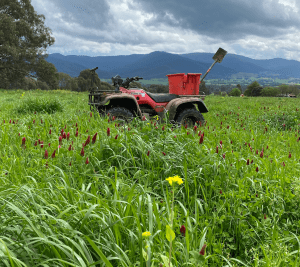The Regenfarming.news summary:
- Maximizing Diversity: Now is the optimal time to plant a highly diverse mix of warm and cool season cover crops.
- Benefits of Diversity: Different plants support various soil microbes, enhancing nutrient availability.
- Ecosystem Support: A diverse cover crop benefits a wide range of above-ground creatures, from livestock to insects.
- Built-in Insurance: Diverse crops provide resilience; if one fails, others will thrive.
- Soil Coverage: Planting a cover crop prevents unwanted weeds from taking over.
- Roots Over Tillage: Instead of tilling, planting cover crops preserves soil structure and saves time and money.
- Water Infiltration: Cover crops increase water infiltration and reduce erosion.
- Weed Suppression: Growing cover crops naturally suppresses weeds.
- Symbiotic Relationship: Warm and cool season plants work together, capturing sunlight efficiently throughout the year.
- Seasonal Transition: As temperatures drop, cool season plants take over, promoting soil health and erosion control.
One of the six soil health principles we often talk about is to maximize diversity. If there’s ever a time for maximum diversity in a cover crop mix, now is that time. The hot summer temps are still dominating, yet days are noticeably shorter and warm night temps will quickly give way to cooler crisper evenings. This weather pattern creates a perfect environment for a highly diverse mix of warm and cool season cover crops.
Diverse Benefits
Diversity in a cover crop is beneficial for many reasons. Different plants feed and house different soil microbes which all work together to make nutrients available to plants. Diversity also helps the above ground creatures. Both an 800# steer and a tiny dragonfly will benefit from a buffet style dinner with loads of options to choose from. Finally, planting a diverse cover crop mix has built in insurance. If one species doesn’t perform well, there are plenty of other plants to take its place. The soil prefers to be covered so why not plant something that benefits you instead of letting an unwanted weed take over?
Let the roots do the work
Tillage can be tempting this time of year, especially after a summer harvested cereal crop. Tillage not only damages soil structure it also costs money and time. As an alternative, that time and money could be invested in planting a cover crop where the benefits greatly outweigh the costs. From increased water infiltration and weed suppression, to erosion reduction and feeding livestock, a growing plant beats a tillage pass any day of the week.
Can warm and cool season plants function together?
Yes, in fact we see great benefit from planting both at the same time. Much like you wouldn’t dump gasoline out of your vehicle neither should we waste the free sun energy which is abundant this time of year. Planting a mix of warm and cool season plants allows sunlight capture for more days of the year. For example, BMR grazing corn and mung beans will capitalize on the heat and sun on these last long summer days. Once those warm seasons are up and growing the cool seasons are close behind, staying happy in the shaded canopy of the tall warm season plants. When temperatures start to drop off the cool season species will flourish helping infiltrate fall rain and prevent erosion. Planting warm and cool seasons at the same time creates a harmonious symbiotic relationship that benefits every living creature around.















